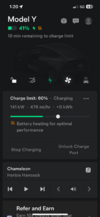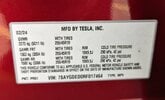Some questions I asked Chat GPT resulted in some answers to this. The LFP (Lithium Iron Phosphate) battery is in some RWD models, but not AWD models. specifically the RWD 3 and Y. These don't qualify for the rebate because China has a monopoly on LFP batteries, whereas the Li-ion batteries qualify due to some US manufacturing. I don't know all the details without further research, so this is preliminary information. LFP batteries are considered more stable and safer, longer lasting, and don't mind being charged to 100% and left there for long periods of time, unlike Li-ion batteries which degrade when charged and left at 100%. Li-ion batteries have a greater energy to weight ratio, so provide for more range, likely why they're used in Dual Motor AWD Teslas, but require more careful charging practices.




